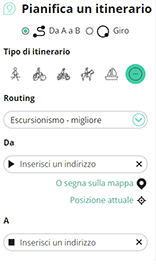Risorsa: Willem Vandenameele
At the exit from Vresse in the direction of Membre is a small chapel "Notre Dame de Walcourt". It houses a very beautiful wooden altarpiece from the 15th century:
It is an altarpiece of the Passion, in carved oak, dating from the end of the 15th century. The origin, author, donors and history are unknown. It probably comes from the Maas region, maybe from Dinant.
At that time, this type of handicraft was produced in very large numbers in Antwerp, Brussels and elsewhere, and was widely distributed throughout Europe. The prefabrication of the characters, one by one, remarkably progressive for the time, made it possible to negotiate and adapt the contracts to the buyer's financial capabilities. This is not the case here, however, as the wood is cut in one piece, panel after panel.
In 2005, the IRPA-KIK conducted a scientific study. As a result, the altarpiece was probably intended for another building. It is not known which. The archives from that time were often scattered or destroyed. Research may one day uncover these secrets, which were inadvertently hidden "like a needle in a haystack".
It is quite possible that it was composed of separate elements from different altarpieces, after a fire, a split or a looting.
The chapel attracted pilgrims (cult of St. Roch) and the altarpiece may have responded to a collective or private wish (end of an epidemic, for example).
In the past, it was probably polychrome. Afterwards the taste had changed; it was covered with a brown paint, with gold decorations. Even more recently (at the moment) it has been acid etched in the latest fashion and the old traces, which could have given us information about its history, have unfortunately disappeared.
The different parts are easy to recognize. The central panel at the bottom is openwork. It probably replaces a nativity scene or even a tabernacle that once existed.
Some characters are incomplete. The sculptor used thinner blocks of wood to make it cheaper and easier. Then he added the missing pieces by gluing them together (for example, the faces, arms or legs). In time (humidity?) these images fell apart and out of ignorance or negligence people threw away the pieces that fell from the tabernacle.
Special elements have also disappeared (body of Christ on the cross, connections between panels). They have been replaced by wood that is often darker. Decorative elements have also been added over time: pendulums, friezes, etc. These are evidence of later aesthetic changes.
Soaking with acid has made the wood grain overly concave. Some of the damage probably dates back to a long time ago (candle burns, repaired angel chin). Insufficient acid flushing sometimes causes black mold to form on the light oak.
The planned restoration will improve the altarpiece's condition for the future and give it a much-deserved new lease of life.
This work of art is the oldest jewel of Vresse.
![]() | | Pubblica | Danese • Francese • Italiano • Olandese • Spagnolo • Tedesco
| | Pubblica | Danese • Francese • Italiano • Olandese • Spagnolo • Tedesco

Seleziona una delle attività più popolari qui sotto oppure affina la ricerca.
Scopri gli itinerari più belli e popolari della zona, accuratamente raggruppati in apposite selezioni.
Risorsa: Willem Vandenameele
Seleziona una delle categorie più popolari qui sotto o lasciati ispirare dalla nostra selezione.
Scopri i luoghi di interesse più belli e popolari della zona, accuratamente raggruppati in apposite selezioni.
Risorsa: Willem Vandenameele
Con RouteYou puoi creare facilmente mappe personalizzate. Traccia il tuo itinerario, aggiungi waypoint o nodi, luoghi di interesse e di ristoro, e condividi le mappe con la tua famiglia e i tuoi amici.
Pianificatore di itinerari

<iframe src="https://plugin.routeyou.com/poiviewer/free/?language=it&params.poi.id=8259447&params.language=en" width="100%" height="600" frameborder="0" allowfullscreen></iframe>
© 2006-2025 RouteYou - www.routeyou.com